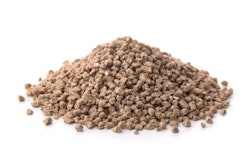
Isn’t it rather exhausting to discuss the same animal feed additives again and again? Yes, but we need to, as we can identify new roles for existing products, which reduces their development and registration cost. We also need to spend some quality time reflecting on what is missing today so we can anticipate the future with more enthusiasm.
It would certainly be entertaining to discuss the additives that will disappear, but that would be unproductive. How can we foresee a future dictated by politicians, some who are far-removed from agriculture? So, no matter how interesting a philosophical or political discussion would be, we will focus on the technical matters. For that, I have prepared a short list of six ingredients that are likely to make headlines in the near future. And, they had better, because these products are needed now.
1. Antioxidants
We have sufficient feed antioxidants, and although some legislation might limit the use of a few, chemistry will ensure that we do not fail to protect feeds from rancidity. We are in dire need of a great array of animal antioxidants. Yes, vitamins E and C and selenium all work wonders, but why stop there? The organism uses a vast number of internal antioxidants, and we all agree modern production taxes the antioxidant defenses of an animal. So, we need more antioxidants to help the animal cope with the increasing stress factors of modern production methods. I strongly believe antioxidants will be the No. 1 additive of the near future.
2. Immunity enhancers
I am well-aware that immunity enhancers exist, but they are not used with enough enthusiasm. Is it because their marketing has not been aggressive enough, or is it because it remains difficult to assess immunity? The success of vaccines, however, is a bright example of how immunity works, and thus, we must not give up. Products that improve immunity — general or specific — are needed today as new strains of viruses and bacteria continue to emerge, while uncontrolled diseases ravage whole regions. Those who invest in this line of products have an uphill battle — that is certain.
3. Anti-viral compounds
Having a strong immunity, even by vaccination, is good, but often not enough. We need to find products that can be added today in the feed or water and provide at least some alleviation against viruses — especially when there is a vast outbreak of a viral disease that threatens not only productivity but also the lives of our livestock. Some products do exist, but their claims are at best interesting. Finding real anti-viral compounds can be compared to a quest for the Holy Grail — a noble cause with an immensely rich prize.
4. Novel proteins
This is the easier part. We already see insects, worms and other such things being tested as a source of nutrients, mostly proteins. The European Union is urgently looking for replacements to soybean meal now that globalization showed its ugly side — other regions will soon follow suit. So, novel, not new, protein sources need to be established. Some believe we can find them in garbage — OK, swill feeding — claiming this is the environmentally friendly way forward. How short human memory is! Years ago, swill feeding was banned because it was considered an unhealthy practice. But, perhaps, it is now less objectionable. In my opinion, the sea is our best chance to encounter novel proteins, but most efforts are focusing on other nutrients trying to make additives out of algae.
5. Feed sterilizers
Here is something uncommon. Yes, we can add too much of an organic acid, but it does not kill everything, and animals will not like the taste of the feed. We can “zap” the feed with X-rays (or something similar in technology), but then cost would be higher than human feed. Or, we can cook it (they already do in some countries), but then again, you destroy a lot of nutrients. And, worst of all, is the fact that nothing prevents feed from being contaminated again. So, we need some taste/metabolic-neutral compounds that kill everything except the nutrients we need. Another Holy Grail quest, you say? Yes, but this is the nature of thinking ahead. Better to shoot for the stars than to hit the ditch, someone once told me.
6. Texture enhancers
Feed already tastes great, either because we pick the right ingredients or we add a ton of flavors, but what about texture? I like my steak medium-well; my wife wants it burned. Fernando likes his raw; whereas Bruce loves to hunt the animal and eat it with the skin on. We are all different in our tastes, so why should we accept that animals across species are all satisfied with the same corn-soy meal diet, or the 93 percent dust-free pellet? Perhaps pigs like something juicer than broilers, hens might enjoy a semi-moist snack and some other species, like a dog, might enjoy a crunchy treat (pet foods are way ahead of us!). Things are not so dramatic, of course, as a hungry animal will eat anything we place in front of it, but as we want to push for higher feed intake with high-genetics animals, we should spend at least some time thinking about feed texture as an additional tool.















